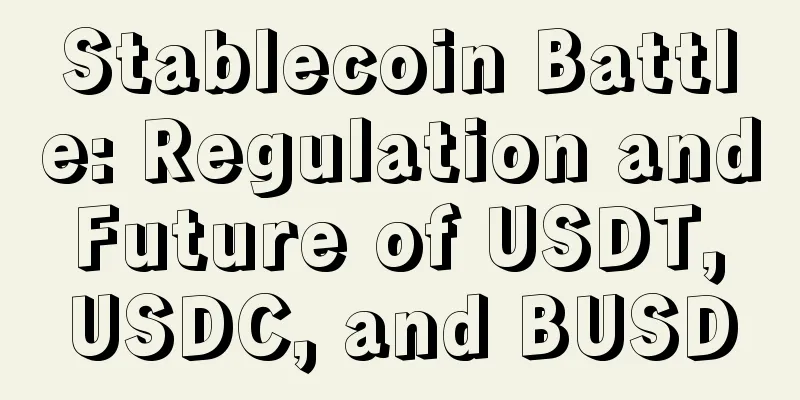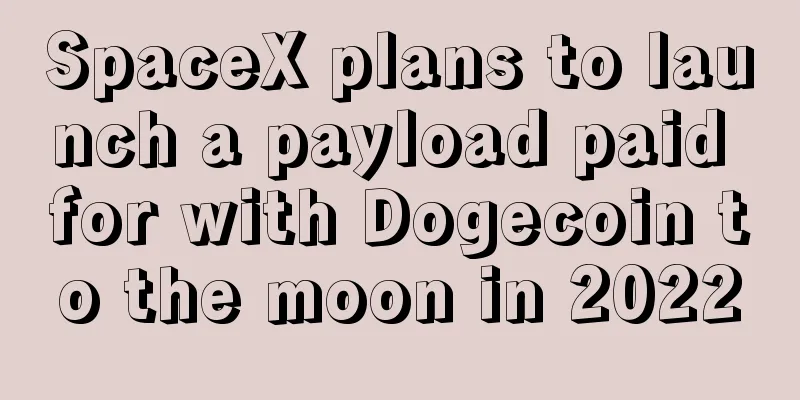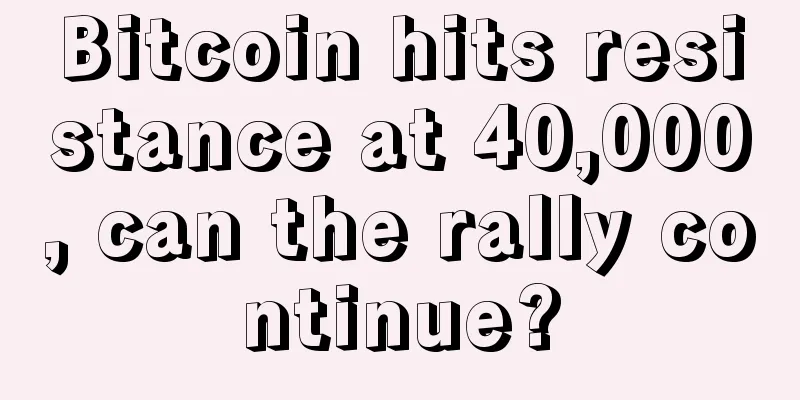Stablecoin Battle: Regulation and Future of USDT, USDC, and BUSD

|
The stablecoin market is slowly cooling down after a turbulent year. Stablecoins are arguably the most successful product in the crypto world, or at least the most easily adopted by the mass market. We saw a huge boom in late 2020 with the emergence of more experimental algorithmic stablecoins, which promised to become perpetual stability machines. They attracted high-yield deposits through token distribution and easily directed liquidity to other stablecoins through Curve pools. But since then, many algorithmic stablecoins have failed, the most notable of which was the $40 billion Terra crash. While this has caught the attention of policymakers around the world, there are two things that are more important to us. The first is the rise of the three giants (USDT, USDC, and BUSD) and their battle for supremacy. The second is the emergence of some on-chain competitors, which are much smaller in scale, but never stop innovating in product design. In addition to these competitive and regulatory dynamics, the stablecoin market has also undergone significant changes. The recent high interest rate environment has provided a huge yield opportunity for centrally issued stablecoins, but it has also reduced the attractiveness of on-chain stablecoins as the yields offered by TradFi are more attractive. In summary, stablecoins will likely continue to maintain their pioneering power in the crypto world in terms of penetration into traditional finance and global payment networks. Regulatory pressure will tighten, but it will be hard to see a cohesive regulatory structure in the short term (at least not in Washington). The most interesting aspect - at least for us - remains the ability of stablecoins to unlock on-chain innovation in credit markets, as well as new opportunities in programmatic and tokenization. Regulatory response and Republican involvement Last year was an extremely tough year for cryptocurrency investors. The losses suffered by ordinary investors affected by the sharp drop in asset prices pale in comparison to those who lost all (or nearly all) of their money on Terra, 3AC, Celsius, or FTX. Today, what happens in the crypto space has consequences beyond the crypto space; regulators and politicians have been quick to seize on the opportunities presented by these failures to introduce stricter regulations. Washington has also undergone a big change. After the most contentious House speaker election since the Civil War, Republicans won the midterm elections and finally gained control of the House of Representatives. Republicans are generally seen as the more pro-business party and are likely to resist calls for more regulation - although it is difficult to understand what they would support. For stablecoins, this means that comprehensive regulation is unlikely to be achieved during this congressional term. In addition, with control of the House of Representatives, Republicans now oversee committees with subpoena power. Here is a detailed relationship combing: Former Chair of the House Financial Services Committee Maxine Waters (Democrat) - who, by the way, has an unusually close relationship with SBF - proposed a restrictive stablecoin bill in 2021. New Chairman Patrick McHenry (Republican) criticized SEC Chairman Gary Gensler's coercive regulatory approach for "stifling American innovation." McHenry also established a new digital assets subcommittee, chaired by French Hill (Republican). The biggest cryptocurrency supporter in Washington is Tom Emmer (Republican), who has now become the House Whip (the third most powerful member of the House). He recently tweeted the word "gm" and publicly praised the decentralized value and ownership economy. The battle of the three giants No one is watching this political drama as closely as the big three stablecoins (USDT, USDC, BUSD), which are already lightly regulated. All three stablecoin giants have blocked transactions from certain addresses at the request of the US government. USDC and BUSD (or Paxos) have been calling for tighter stablecoin regulation as a way to ease the concerns of institutional investors and distance themselves from “stablecoins” like Terra. The only thing we can imagine about what this Washington administration will introduce is a regular stablecoin bill regulating the assets that large stablecoin issuers can hold. Whatever the outcome, though, the fight between USDT, USDC, and BUSD is turning into a wider clash of empires. Tether (USDT) is the OG stablecoin, tracing its roots to Bitcoin sidechain Omnichain in 2015. It remains the market leader, but its lead has waned, from 75% market share to just over 50%. Unlike USDC and BUSD, it has not gone out of its way to please US regulators. However, given its core reliance on the US dollar banking system, it has no choice but to comply with those rules. Tether also has a more limited user base for redemption. Both BUSD and USDC allow almost all KYC users to redeem stablecoins for US dollars in their bank accounts. At the same time, Tether excludes US retail investors, charges a 0.1% fee on redemptions (up to $1,000), and requires redemptions to be greater than $100,000. This means that its peg to the US dollar is enforced by large market makers and exchanges. USDC aims to wrap itself in the American flag as much as possible. Some believe that its best prospect is to become the official digital currency of the United States. There is no news yet on whether the US government will make a relevant acquisition. Since the beginning of 2021, USDC has been eating into Tether's lead, taking about 30% of the market share in the first six months. USDC hopes that as cryptocurrencies become professionalized, institutional investors will favor it more than its foreign competitors. This is a good bet. USDC is also not focused on trading on centralized exchanges like USDT or BUSD. Instead, it is more focused on payments, and the cross-chain transfer protocol plan, that is, the centralized bridge across nine blockchains released by USDC. BUSD is technically a US stablecoin. It is affiliated with Binance US and managed by Paxos, but they are all loyal to the huge institution of Binance, and no one knows where it is governed. Binance clearly sees stablecoins as a fundamental element of its overall business, as shown by its announcement in the fall that it would “automatically convert” USDC to BUSD on Binance. Binance has not done the same for USDT, which accounts for seven of the top ten trading pairs on Binance by daily volume. Are Stablecoins Just Money Market Funds? When interest rates are close to 0, the stablecoin business is very simple. Some stablecoins may have earned yields (most notably Tether), but no one expects that yields should be passed on to stablecoin holders. The massive rate hikes by the Federal Reserve and other central banks in 2022 have reversed the yield opportunities for stablecoins. Previously, investors were willing to hold stablecoins rather than store dollars in banks because stablecoins could extract more yields on the chain. But now, Compound and Aave's deposit interest rates are around 2%, while even a US retail investor can earn nearly 4% interest income from a bank savings account. Centrally issued stablecoins like USDT, USDC, and BUSD need to figure out how to pass on some of the benefits to their users, both the largest ones and smaller players like Ondo Finance, which offers regulated tokenized versions of traditional securities. These products are only available to accredited investors, and while they have a minimum purchase price of $100,000, the 4.7% on-chain yield backed by short-term U.S. government bonds is very attractive. It’s not hard to imagine USDT and BUSD following in the footsteps of USDC and its parent company Coinbase, which now offers 1.5% interest on all USDC used by MakerDAO in the Dai Pegged Stability Module (PSM). Other on-chain projects require fiat stablecoins as backing, so it’s not hard to imagine more profit-sharing agreements being negotiated between centrally issued stablecoins and on-chain DAOs. Future prospects The market development of stablecoins seems to be a natural time for acquisition or consolidation. Shareholders may decide that it is not worthwhile to spend money to weaken competitors and call a truce (just like Uber’s truce with Didi in China). However, it’s hard to imagine such market dynamics working for the big three stablecoins, each of which is the currency of a wider crypto empire. BUSD’s funder, Binance, is one of the world’s largest private companies, and has maintained a leading position in spot trading with more than 70% market share for many years. It’s not waving the white flag any time soon. Tether is owned by a holding company that also owns Bitfinex, once a top crypto exchange but now in a big way. It’s possible that Binance could acquire Tether and Bitfinex, and then offer BUSD to U.S. investors and Tether to everyone else. It’s possible. In our opinion, USDC is underrated in this race, not because of its Captain America tricks, but because USDC is the most widely used stablecoin in DeFi. It has the largest trading volume of all stablecoins on Uni v3 (three times that of USDT). There are more USDC stablecoin deposits on Compound and Aave than on BUSD and Tether combined. Binance has been successful in DeFi on BSC, but if the BUSD trading pair ranking on the centralized exchange Binance is conducted, the original top-ranked BUSD trading pair (WBNB/BUSD) will be ranked 39th. At the same time, USDC's 24-hour trading volume in the Uni v3 WETH/USDC pool is higher than the ETH/USD trading pair on Coinbase, which owns half of USDC. If the future is on-chain, then Tether and BUSD will catch up to USDC one day. This begs the question of whether on-chain stablecoins (Dai, Frax, LUSD, etc.) will have advantages over USDC and other fiat-backed stablecoins. We will explore this question and more in future articles. |
<<: Hashrate Index: A look at the Swedish Bitcoin mining industry
>>: 5 things that Ethereum Shanghai upgrade validators need to pay attention to
Recommend
What palm lines are the characteristics of the rich? The palm lines of the rich are revealed
In life, those who can become rich are people wit...
Several major cryptocurrency users in China were subject to tax audits for personal income tax
A large account broke the news to Wu that since t...
How Dubai's Museum of the Future's 3D-printed building became a hub for blockchain technology in the Middle East
Rage Review : Dubai's first office building b...
Is it good to have a cinnabar mole on the clavicle? What does a cinnabar mole on the clavicle mean?
Mole is a key part in physiognomy. Moles will hav...
Analyzing Marriage and Relationship from the Ring Finger Palmistry
There are many ways to predict marital status, su...
Which people are stingy in daily life?
Which people are stingy in daily life? 1. People ...
Facial features of liars and perverts
Facial features of liars and perverts Being unmar...
Beware! Many Binance Android APP transfer addresses have been modified to hacker addresses to precisely implant malicious code
Everything on your "Binance" Android AP...
There is a serious bug in the nVidia driver, which may explode your memory
Easy miner, creating value for users. We have rec...
Do people with sunken nose bridges really have no popularity with their relatives?
Family connections refer to the relationship with...
Are peach blossom eyes beautiful?
Regarding peach blossom eyes, some people say the...
Jack Ma has begun to plan and develop blockchain. Will China's blockchain industry explode?
Since its US IPO, Alibaba has been on a global ac...
Illustration of a large triangle in the center of the palm
There are many different kinds of lines in the pa...
Bitcoin rebounds amidst undercurrents in the market
If the stock market is a barometer of a country&#...
Detailed explanation of the appearance of a woman with a low nose bridge
The bridge of the nose is also known as the palac...









